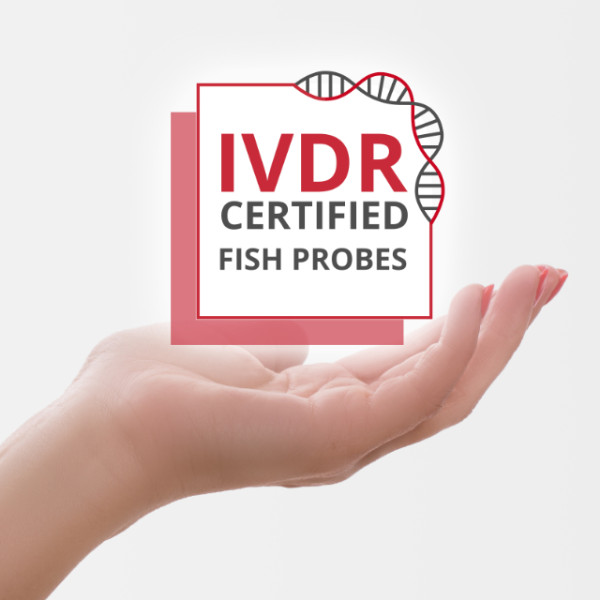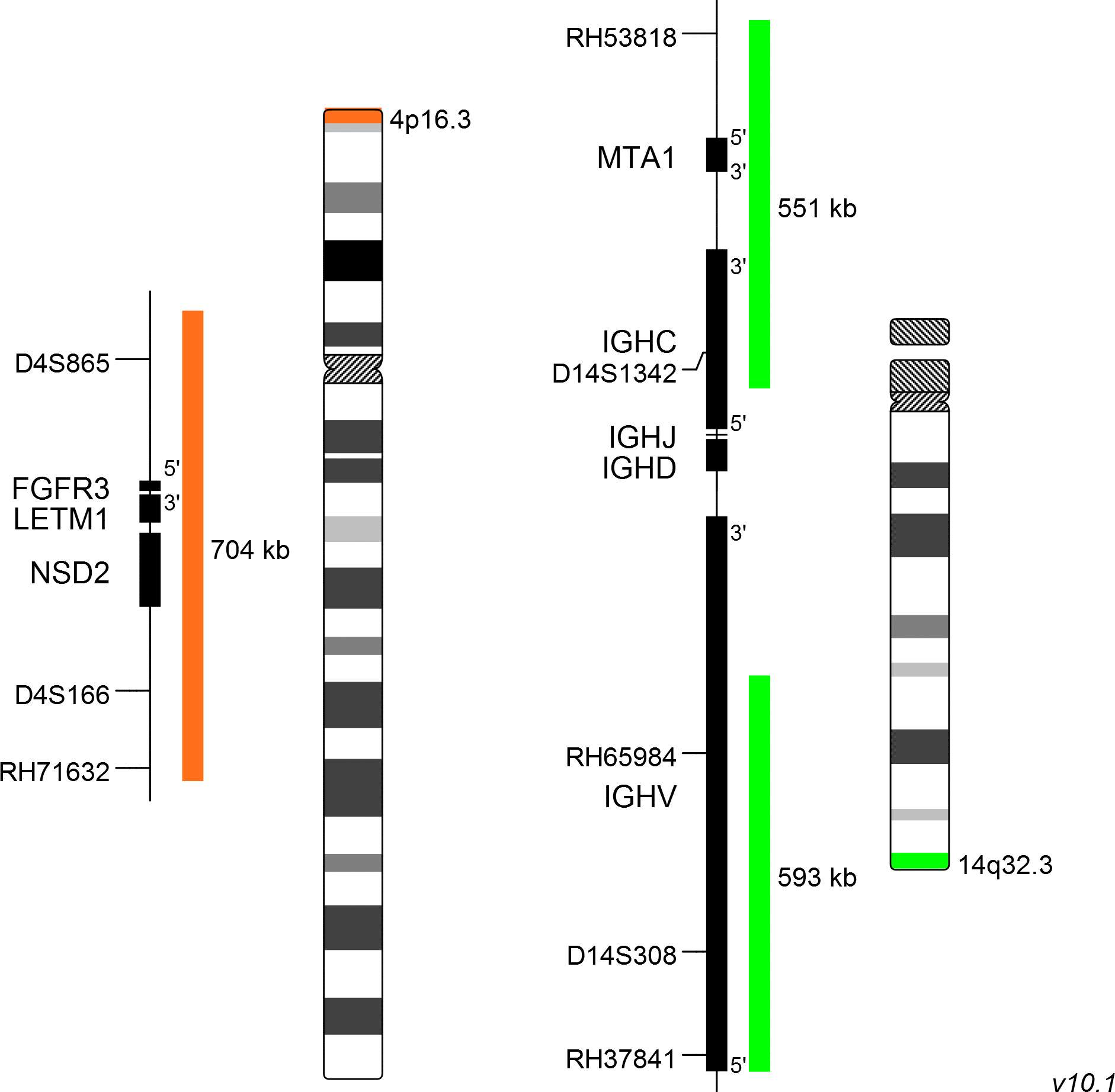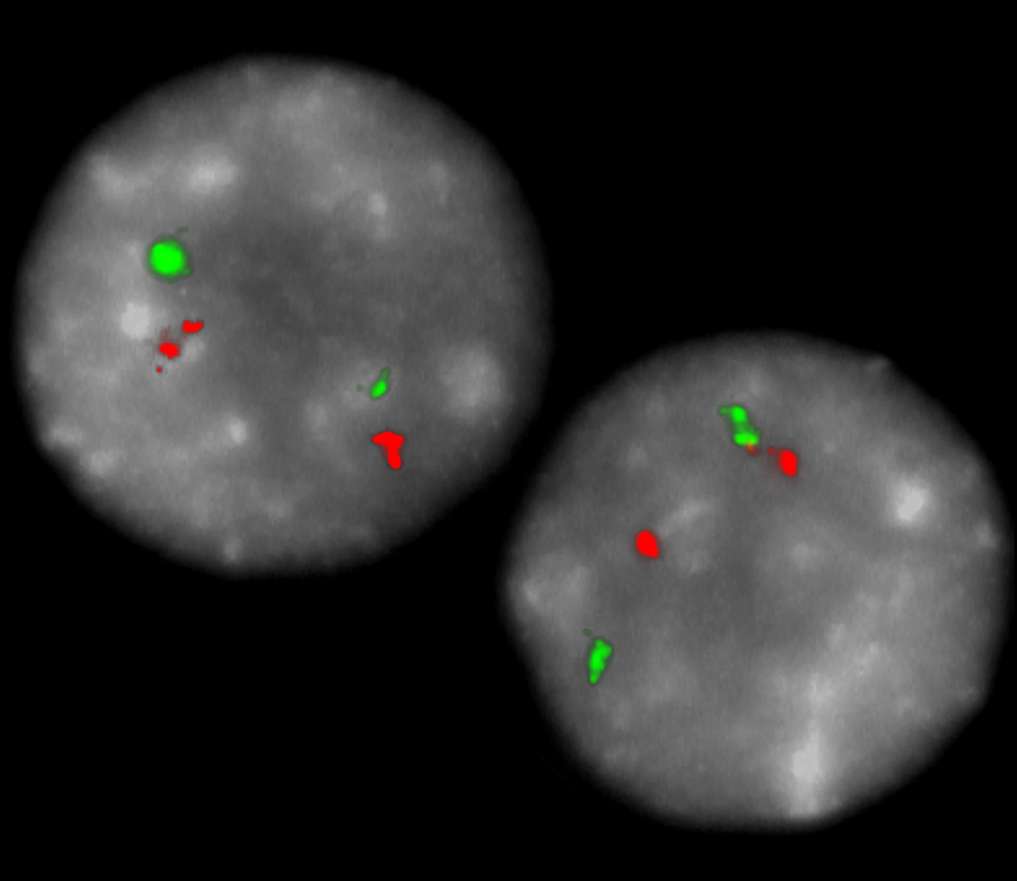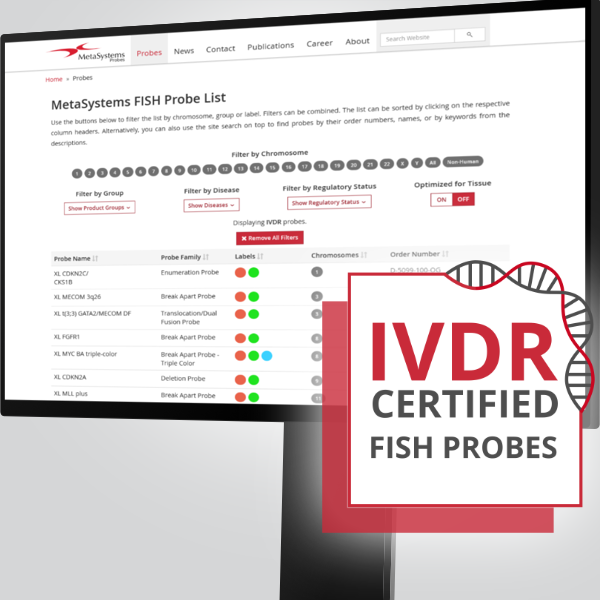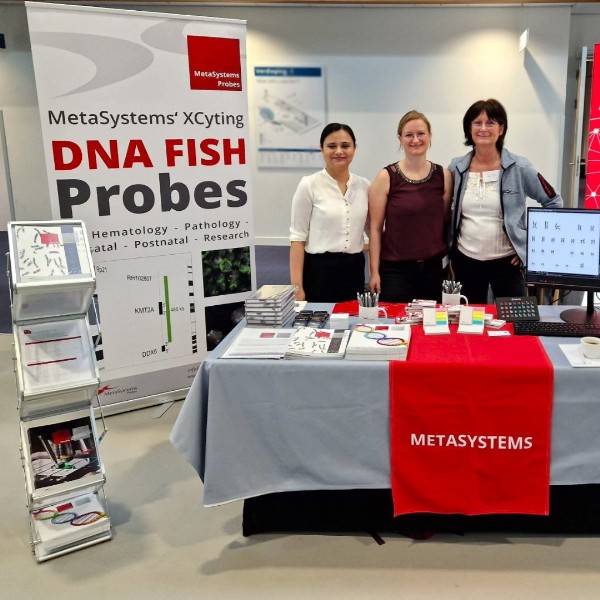The most frequent primary abnormalities in multiple myeloma (MM) are trisomies of odd-numbered chromosomes or translocations involving the immunglobulin heavy chain (IGH) gene locus. The most common MM-associated IGH translocations are t(11;14), t(4;14), t(6;14), t(14;16) and t(14;20) in the order of their occurrence. The consequence of these rearrangements is the dysregulation of genes juxtaposed to transcriptional enhancers in the IGH locus. Prognosis and risk stratification strongly depend on the detection and interpretation of cytogenetic primary abnormalities. t(14;16) and t(14;20) are considered as high risk, t(4;14) as intermediate risk and t(6;14) and t(11;14) as standard risk cytogenetic aberrations in patients with MM based on FISH testing. Secondary aberrations are also influencing the outcome.
The recurrent translocation t(4;14)(p16;q32) is juxtaposing FGFR3 with the 3′ alpha IgH enhancer on der(14), whereas expression of NSD2 is controlled by the Eμ enhancer on der(4). FGFR3 overexpression is detectable in about 70% of t(4;14) positive MM patients, suggesting that FGFR3 dysregulation is not the crucial oncogenic event. The poor outcome of patients lacking FGFR3 expression due to the loss of der(14) is supporting this conclusion. Transcripts from the NSD2 locus on the other hand are found to be overexpressed in all t(4;14) positive MM cases, suggesting that this gene region plays a major role in the manifestation of MM.
Clinical Applications
- Multiple Myeloma and Plasma Cell Neoplasms (MM)
